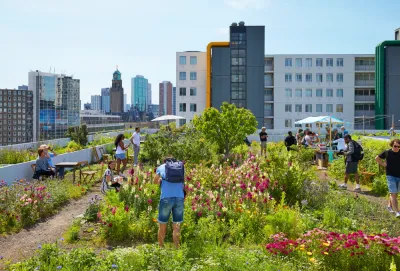What should urban planners reconsider when engaging in sustainable development?

City planners in the modern age are in one of the most exhilarating positions in history—to design projects for a sustainable future. The climate crisis is changing operations in every sector, but building projects are distinct because much of the process could shift due to global climate goals. What should urban planners reconsider when engaging in sustainable development?
Understanding the Urgency
Global temperatures will exceed sustainable levels in the coming years. Climate goals aren’t being achieved at the pace humanity needs to progress. Growing populations, industrialization, and international development require urban planning to reframe project trajectories. Planners have to construct them sustainably and assist with alleviating the climate crisis.
Dismissing the relevance of the climate crisis created vulnerable cities. Countless urban locations worldwide are susceptible to climate-influenced risks, including:
- Reduced citizen health and well-being
- Increased natural hazard severity, like drought or wildfire
- More radical temperature variances
- Inability to sustain increased population due to urban migration
Sustainable urban planning projects will create standards for future construction. Outlining precedents and priorities will simplify processes and decrease resistance against climate-focused city planning.
Preparing for Disasters
The goal is to have cities worldwide that are sturdy enough to handle generations of wear and tear—including human use and natural impact. Though sustainable urban planning intends to mitigate some of the effects of the climate crisis, the side effects of it will not dissipate immediately.
Therefore, cities must have an inherent resistance to the most intense elements humankind has ever experienced. Creating a building that can withstand hurricanes or tornadoes is a lofty goal, but it isn’t impossible.
Urban planners can consider communal infrastructure for safety and security. Making buildings safe for sheltering during natural disasters prepares citizens for the worst-case consequences of the climate crisis. It solidifies a city’s emergency management plan and ensures residents have access to clean water and air in thoughtfully constructed buildings made from sustainable yet durable materials.
It’s not just about having robust infrastructure—designing landscaping to supplement resiliency is paramount. Although trees assist in mitigating heat island effects and adverse respiratory ailments in larger cities, brittle or damaged ones with shallow roots can cause more damage during storms.
Installing Greener Cities
Keeping the climate crisis at the forefront of city planning projects is a worthwhile thesis, but how does execution look? Adaptability and independence are two overarching qualities of urban planning for the climate crisis.
Adaptive city planning will prevent flooding or high winds from damaging too much while acclimating to climate intensity and severity. It also reduces the fear of resource scarcity and provides healthier environments for residents. Finding a balance requires city planners to get creative while balancing citizens’ and sustainability needs.
A prepared city equates to a more economically viable city. Businesses seek locations for the long term—investing in a site in a climate-friendly town with healthy residents is a financial no-brainer. Areas with Internet of Things (IoT) technology to automate monitoring or that use renewable energy to cut down energy consumption and costs are more enticing.
City grids connect every infrastructure facet. For example, public transportation relies on telecommunications and energy and takes a hit if one system has an outage. Planning cities where each necessity can operate without assistance will make them more resilient and disrupt inhabitants’ lives and daily operations less frequently.
Urban Planning for a Greener Future
Some locations need restructuring from the ground up. Other cities are just beginning their development journey, but they’re blossoming from an existing environmentalist mentality. No two areas are the same for urban planners, but most places will eventually transform into embracing renewables, instilling ethical building practices and implementing technological aids for maintenance.
The future of city planning is one of the most impactful of the world’s sustainability initiatives, and its versatility and innovation will change the planet for the better.

National Parks Layoffs Will Cause Communities to Lose Billions
Thousands of essential park workers were laid off this week, just before the busy spring break season.

Retro-silient?: America’s First “Eco-burb,” The Woodlands Turns 50
A master-planned community north of Houston offers lessons on green infrastructure and resilient design, but falls short of its founder’s lofty affordability and walkability goals.

Delivering for America Plan Will Downgrade Mail Service in at Least 49.5 Percent of Zip Codes
Republican and Democrat lawmakers criticize the plan for its disproportionate negative impact on rural communities.

Test News Post 1
This is a summary

Test News Headline 46
Test for the image on the front page.

Balancing Bombs and Butterflies: How the National Guard Protects a Rare Species
The National Guard at Fort Indiantown Gap uses GIS technology and land management strategies to balance military training with conservation efforts, ensuring the survival of the rare eastern regal fritillary butterfly.
Urban Design for Planners 1: Software Tools
This six-course series explores essential urban design concepts using open source software and equips planners with the tools they need to participate fully in the urban design process.
Planning for Universal Design
Learn the tools for implementing Universal Design in planning regulations.
EMC Planning Group, Inc.
Planetizen
Planetizen
Mpact (formerly Rail~Volution)
Great Falls Development Authority, Inc.
HUDs Office of Policy Development and Research
NYU Wagner Graduate School of Public Service



























